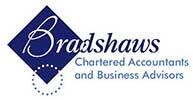HMRC resource shortage spreads to self-assessment
HMRC has announced that the general self-assessment helpline will be closed to taxpayers for several months. When will it reopen, and what should you do in the meantime?

HMRC’s self-assessment helpline (0300 200 3310) will be unavailable from 12 June until 4 September 2023. The agent dedicated line has previously been restricted (though the service resumed on 5 June), and the VAT registration helpline was also closed recently in an effort to divert staff to help clear backlogs in other areas. This latest move shows just how much pressure HMRC is under in relation to staffing. It should be noted that the summer is typically a quieter time for tax return filing, and the helpline will be open again in time for the traditionally busier autumn and winter months, but it's issued some guidance on where to find help online in the meantime:
- Registration
- Checking if a tax return is needed
- Ordering paper self-assessment forms; and
- Accessing the extra support team.
If you've been issued with a tax return but don’t meet the criteria that require one to be filed, you (or your authorised agent) need to formally request that it be withdrawn. This can’t be done online via the personal tax account, so you will either need to write a letter or use the HMRC webchat service.
Related Topics
-
Government rushes through NI cap on pension salary sacrifice
The government has already drafted legislation to impose a £2,000 limit on NI exempt pension contributions under salary sacrifice arrangements. What else do we know?
-
Sneaky change is a blow for side hustles
With most of the media focused on the headline-grabbing announcements from the Budget, a read of the published small print reveals another change coming in 2029. It’s bad news if you are an employee with a side hustle, but what’s going on?
-
HMRC checks directors’ loans are paid up
HMRC is writing to agents to check corporation tax returns for previous years are correct as it used to be possible to add a future date for an anticipated loan repayment. What’s the issue and what should you do if your advisor receives a letter?

 This website uses both its own and third-party cookies to analyze our services and navigation on our website in order to improve its contents (analytical purposes: measure visits and sources of web traffic). The legal basis is the consent of the user, except in the case of basic cookies, which are essential to navigate this website.
This website uses both its own and third-party cookies to analyze our services and navigation on our website in order to improve its contents (analytical purposes: measure visits and sources of web traffic). The legal basis is the consent of the user, except in the case of basic cookies, which are essential to navigate this website.